To find the best soils for growing microgreens, you need a good understanding of the intricate soil ecosystem that is made up of a combination of minerals, organic matter, organisms, water and oxygen.
This knowledge will highlight the profound connection between these tiny greens and the nourishing environment in which they thrive.
Microgreens are a great way to add flavor, texture, and nutrition to any meal. These tiny plants are packed with vitamins, minerals, and antioxidants. Plus, you can grow them easily and inexpensively indoors.
However, to grow healthy and tasty microgreens, you need to use the right soil.
In this guide, you’ll discover top-rated soils like Miracle-Gro and FoxFarm, and why soil composition and nutrients are crucial for microgreen growth. So if you want to know the best soils for growing microgreens, read on.
Our Picks

In This Guide
What Are Microgreens?
Microgreens are small, nutrient-packed plants harvested just after their first true leaves emerge. They are a great source of vitamins, minerals, and antioxidants.
Apart from their nutritional benefits, they add a splash of color and intense flavor to a variety of dishes.
Why Soil Matters for Microgreens
The soil is not just a medium; it’s the lifeblood for microgreens, providing them with the essential nutrients and support they need. The health and vitality of these plants directly hinge on the quality and composition of the soil.
Microgreens have a tender nature, requiring a nurturing environment to thrive. Soil provides nutrients, water, and oxygen to support healthy growth.
The proper soil will supply your microgreens with the nutrients they need. However, the incorrect soil may cause them to develop poorly or even die.
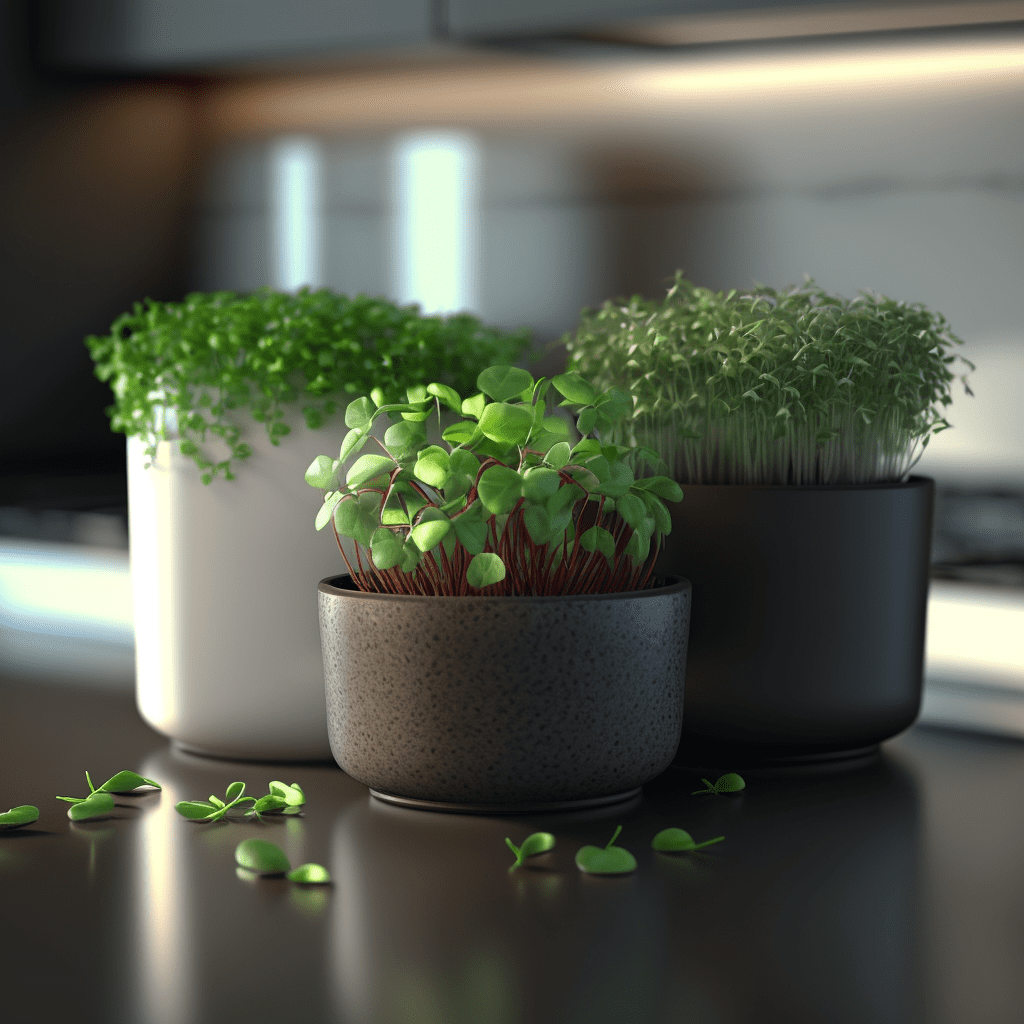
Top 11 Microgreen Soil Mixes For Fast Growth
Choosing the right soil mix can expedite the growth of your microgreens, ensuring they reach their full potential.
These curated blends offer a balanced environment for the plants, marrying drainage, aeration, and nutrient availability.
Sizes available: 6 quarts, 8 quarts, 2-8 quart packs
- Prevents over and under-watering
- Added fertilizer provides for optimal plant growth
- Well-draining and well-aerated mix
- It may contain too much nitrogen
- Some packs contain some bugs
Miracle-Gro offers exceptional water retention, a key factor for microgreen growth. It is popular due to its unique moisture control technology. With its proprietary AquaCoir composition, this soil mix absorbs up to 33% more water than standard potting soil.
So it’s ideal for preventing plant death from over- or under-watering. Enriched with fertilizer, it provides essential nutrients that support healthy and vigorous growth for up to 6 months.
This specialized potting mix is designed to help your plants grow bigger and faster. This mix provides a solid base, essential nutrients, and the perfect habitat for plant roots.
Sizes available: 12 quarts
- Contains beneficial microbes and fungi
- Ready to use right out of the bag
- pH adjusted
- Doesn't produce bugs
- The soil may smell like mold
FoxFarm Happy Frog Potting Soil is a nutrient-rich, organic mixture that drains well. It also provides enough oxygen for your microgreens to thrive in. This mix is rich in beneficial microbes and fungi that enhance root development and nutrient uptake.
This potting soil provides unrivaled support for plant structure for healthy and fast growth. It’s also pH-balanced for optimal nutrient absorption, and you can use it straight from the bag.
Sizes available: 8 quarts
- All-natural and organic blend
- Enriched with a mix of endo and ecto mycorrhizae
- Ideal for indoor and outdoor plants
- Inconsistent package contents (some have barks and sticks)
Espoma Organic Potting Soil Mix is a premium blend that promotes healthy root growth and water management. This organic soil is a fertile blend of sphagnum peat moss, humus, and perlite with earthworm castings.
It also contains alfalfa meal, kelp meal, and feather meal. These provide excellent drainage, aeration, and moisture retention. It’s the ideal soil mix to ensure your plants thrive.
For enhanced root growth, it also has a special mix of endo and ecto mycorrhizae. It’s the potting mix for those seeking a premium, all-natural blend that supports healthy plant growth.
Sizes available: 5 pounds, 10 pounds
- Made from 100% natural coconut coir
- Optimum pH balance
- Doesn't dry out quickly
- Compact and expands to a lot of soil
- Some bricks are compressed together
Verdana Coco Peat is made from the waste left over from making coconut coir. This makes it a natural and sustainable choice. After being rehydrated, the compacted coco peat mix expands to a large volume.
For instance, a 10 pound block expands to about 18 gallons, so you also get great value. It is not necessary to water your plants as often since this special potting mix does not dry up as quickly as regular dirt or soil.
So if you’re searching for a soilless growing medium or a soil additive to improve texture, this potting mix is worth considering. It makes gardening easier with its water-saving properties, lightweight, and all-natural composition.
Sizes available: Wheelbarrow block, bricks (3-pack), 20mm pellets (bag of 100), 40mm pellets (bag of 30), 60mm pellets (bag of 10), 80mm pellets (bag of 10), 100mm pellets (bag of 10)
- Easy to use
- Expands quickly with the addition of water
- Compressed discs are space-efficient
- Made from 100% natural coconut coir fiber
- Comes in an easy-to-store, resealable packaging
- Needs plenty of water to expand
This compressed soil mix is designed for ease of use, space efficiency, and convenience. It expands when added water creates a fluffy and airy growing medium that promotes strong root development.
Its aeration and water-retention make it a reliable choice for growing healthy microgreens.
Pure and untreated, the raw coconut coir is dried and compressed into convenient sizes for your choosing. It also has handy, resealable, and space-saving packaging.
The organic fiber soil from Window Garden is a great choice for gardeners, whether they are just starting or have a lot of experience. Its unique natural fibers give plants a lot of oxygen, which prevents root rot and helps your plants live longer and be healthier.
This is also an eco-friendly, peat-free, and reusable growing medium for microgreens, an excellent sustainable option.
With its convenience, easy storage, and long-lasting plant life, this fiber soil is an excellent choice for indoor gardening.
This potting soil can grow four times its original size and produce three gallons of soil. So it’s a practical and effective alternative for gardeners.
This soil mix is perfect for growing microgreens and other small plants in containers inside or out. It’s composed of natural materials, including powdered coconut coir, worm castings, compost, humic acids, amino acids, kelp, and helpful GroBiotics like mycorrhizae.
Its nutrient-dense makeup includes over 55 trace minerals and other vital elements. The mixture quickly absorbs water and keeps the soil wet for three times as long as regular soil.
Plus, the resealable, foldable, and lightweight bag is useful for small and big gardening jobs since it reduces the need for storage space.

Sizes available: 8 quarts
- Made of 100% organic materials
- Soil holds enough water for the plants and drains well
- Lightweight, soft, and compact
- Perlite and pumice provide air space
- May contain bugs and mold
Black Gold is well-known as an affordable and flexible alternative that doesn’t skimp on quality. The Organic Materials Review Institute lists this potting soil. So you know it meets their standards for growing organic food and fiber. It is also proudly made in the USA.
With its 100% organic base, this product delivers exceptional quality and performance. It also ensures the highest standards for environmental sustainability.
Its unique blend of screened earthworm castings, Canadian sphagnum peat moss, compost, and forest humus creates a nutrient-rich foundation for plant growth.
Also, the perlite and pumice provide excellent aeration, which is great for encouraging healthy growth in any garden. If you’re interested in organic gardening and want to improve your results, this potting soil is a great choice.
Sizes available: 8 quarts
- Adequate amount of nutrients essential for plant growth
- Made of organic materials
- Pre-mixed and ready to use straight out of the bag
- Provides excellent soil drainage, aeration, and water retention
- Expensive
Espoma Organic Seed Starting Premium Potting Soil Mix is ideal for starting seeds and caring for early seedlings. It combines 75-85% peat moss, perlite, and aged humus perfectly. These ingredients work together to keep moisture while allowing air to circulate and drain.
The extra proprietary blend of 11 different strains of mycorrhizae encourages root development and nutrient absorption in your microgreens.
Plus, it is fortified with Espoma’s own Bio-tone mix. This mix of helpful microorganisms boosts nutrient uptake and encourages strong plant development.
And because you can use it with any seed or cutting, it’s a great option for beginner and professional gardeners.
Sizes available: 8 quarts
- Organic composition
- Easy to use and lightweight
- Complete with the essential basic nutrients
- Adequate aeration and drainage for healthy root development
- May require additional fertilizer for added nutrients
Perfect Plants Organic Potting Mix is a must-have for any indoor or outdoor gardener. This mix contains a combination of peat moss, perlite, aged pine bark, and coconut coir. So it offers excellent drainage, aeration, and moisture retention.
The added worm castings and organic fertilizers give your microgreens the nutrients they need for healthy growth. This potting mix also includes mycorrhizae, which aids in root growth and helps flush out harmful bacteria.
And besides preventing waterlogging, the resealable, heavy-duty bag provides convenient transport and storage.
Wonder Soil is formulated with worm castings, mycorrhizae, kelp, perlite, and more. These promote healthy root growth and maximize plant growth potential. It’s also peat-free and all-natural, so it’s safe for family pets.
This potting soil is a lightweight and eco-friendly option for growing microgreens. With excellent water retention, drainage, and aeration in the root zone, this soil mix can help you save up to 50% on water, fertilizer, and seed.
And because it’s compressed and dry, it’s easy to store and transport. When you’re ready to use it, mix it with water and watch it expand to four times its original size. It will also save you shed space and it’s easy to carry wherever you need it.
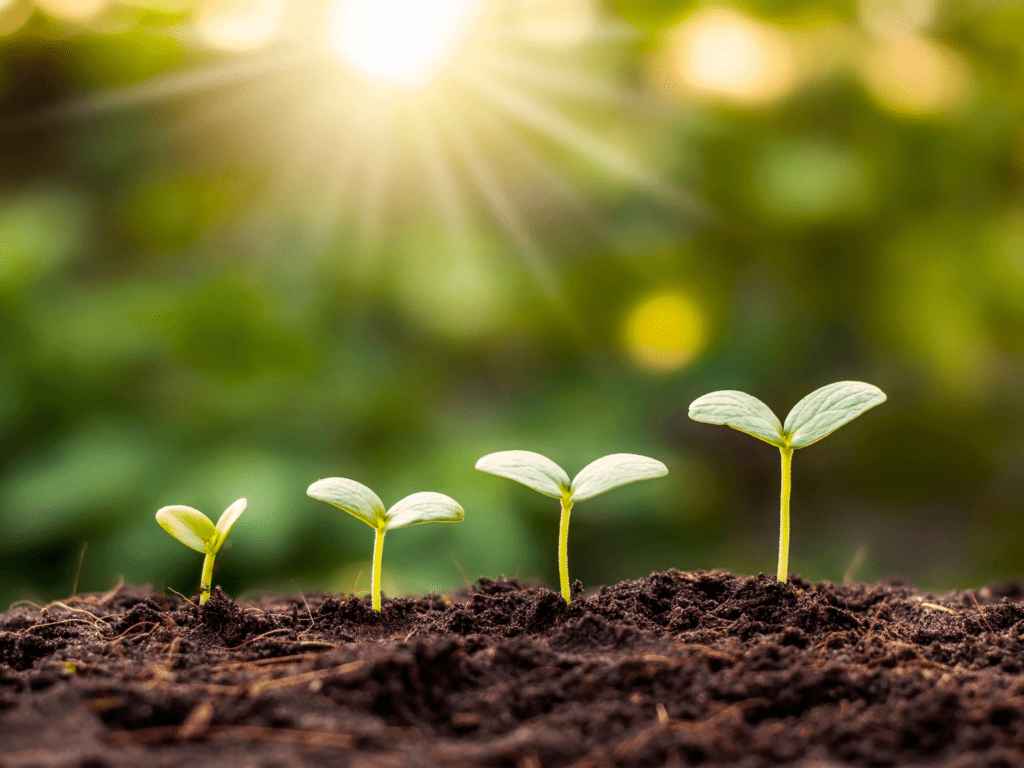
Understanding Key Soil Components
Every component of the soil, from its texture to its mineral content, plays a distinct role in plant growth. Understanding these elements can help gardeners tailor their soil mixes to the specific needs of microgreens.
Drainage
Drainage, a key component in gardening practices such as raised beds, sloped landscapes, and French drains, efficiently channels excess water away from plant roots, safeguarding them from root rot.
Root rot and other problems caused by overwatering may be avoided with good drainage. If the soil doesn’t drain properly, the roots might rot if constantly submerged in water.
Implementing effective drainage systems like gravel layers, perforated pipes, and swales not only deters stagnation but also fosters a conducive environment for robust root growth.
Aeration
Aeration, the process of introducing air into soil, promotes healthy root systems and efficient nutrient absorption. Well-aerated soils ensure that roots have ample oxygen, fostering robust growth.
Soil aeration is the presence of air spaces within the soil. Pockets like this let oxygen reach the plant’s roots, essential for its development. Roots will flourish in well-aerated soil, which will also help to prevent problems like compaction.
Nutrient Retention
Nutrient retention revolves around the soil’s competence in capturing and dispensing vital nutrients like nitrogen, phosphorus, and potassium to plants.
This capability guarantees that microgreens are steadily supplied with essential nourishment, such as calcium and magnesium, during their entire growth cycle.
Microgreens can get all the nutrients they need from the soil if they can retain them. Some soil mixes contain basic fertilizers. Some will need additional fertilizers from other sources.
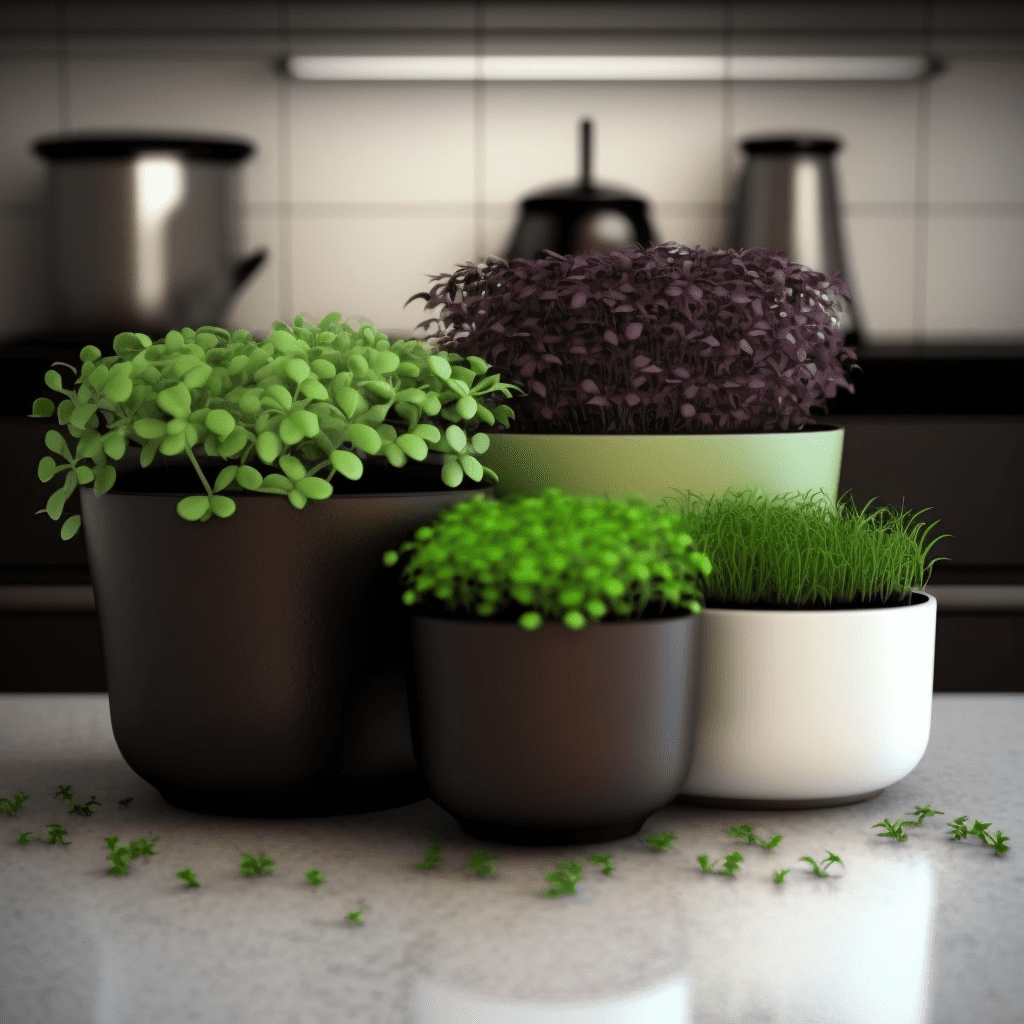
Ingredients of High-Quality Soil Mix
A high-quality soil mix for microgreens combines both organic and mineral components, creating a balanced growing environment. The harmony between these elements determines the vitality and yield of the microgreens.
- Peat Moss: Decomposed sphagnum moss that retains moisture and promotes aeration.
- Coconut Coir: Fibrous coconut husks that retain moisture and provide good drainage.
- Perlite: Expanded volcanic rock that improves aeration and drainage and prevents waterlogged roots.
- Vermiculite: Expanded mineral that enhances moisture retention and nutrient availability.
- Compost: Decomposed organic matter that adds nutrients and microorganisms and improves soil structure.
- Worm Castings: Enriches soil with microbes and nutrients and promotes growth.
- Biochar: Organic charcoal that boosts soil structure, moisture retention, and nutrient availability.
- Mycorrhizae: Fungi that improve nutrient and water absorption.
- Additional Amendments: Bat guano, fish meal, bone meal, or kelp meal. These provide nutrients and enhance microbial activity and soil structure.
Factors To Consider When Choosing a Potting Soil for Microgreens
Selecting the optimal potting soil for microgreens necessitates a thorough comprehension of vital elements such as soil pH, organic matter content, and drainage properties.
By considering factors like nutrient composition, texture, and microbial activity, you can tailor your soil mix to meet the specific requirements of these tender plants.
Soil Composition
Soil composition is a mosaic of sand, silt, clay, and organic matter, each contributing to the soil’s overall texture and drainage capabilities. A balanced composition is integral for the optimal growth of microgreens. It determines water drainage and root penetration. For microgreens, a well-aerated soil is usually recommended.
Your soil should be loose and well-draining. It should allow your microgreens’ roots to grow and prevent water from pooling around them.
A good soil mix for microgreens should be made up of 50% organic matter. Examples are peat moss or compost, and 50% inorganic matter, such as perlite or vermiculite.
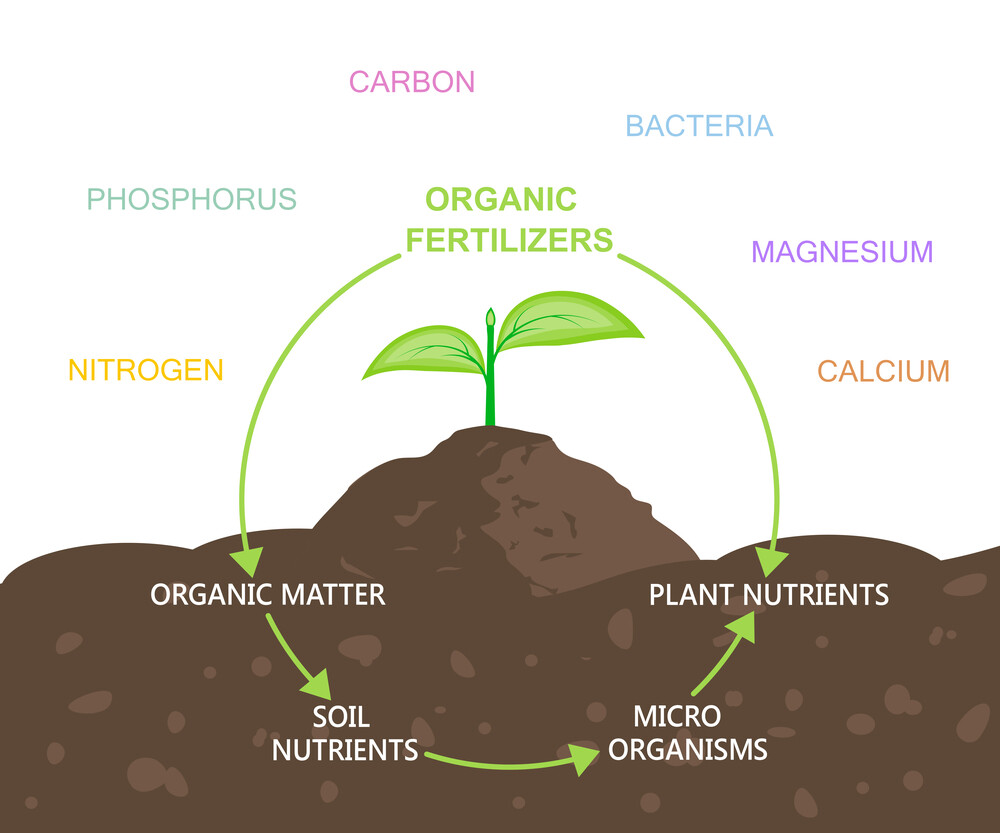
pH Levels
The pH levels dictate the soil’s acidity or alkalinity, influencing nutrient availability to plants. Microgreens thrive in slightly acidic to neutral pH levels, with a pH between 6.0 and 6, to ensure maximum nutrient absorption.
The soil’s pH level can affect nutrient availability, which in turn affects the growth of microgreens. If your soil is too acidic or alkaline, it can affect the availability of nutrients, impacting their growth and health.
Nutrient Content
Nutrients like nitrogen, phosphorus, and potassium are essential for the robust growth of microgreens. Organic matter in the soil can serve as a slow-releasing nutrient source.
Choose a potting mix with the right balance of nutrients for your microgreens to thrive. A good soil mix should contain a balance of all three, with slightly higher nitrogen levels, promoting leafy growth.
Fertilizing Your Microgreens
Fertilizing microgreens supplements the existing nutrients in the soil, ensuring consistent growth and health. Choosing the right type and amount of fertilizer can elevate the quality and nutritional content of your crops.
Microgreens generally don’t require much fertilization. This is because they’re harvested early in their growth cycle. However, if you’re using a soil mix with low nutrient content, consider using a gentle, organic liquid fertilizer to support growth.
Follow the manufacturer’s instructions and avoid over-fertilizing. This can lead to nutrient imbalances and poor growth.
Preventing Soil-Borne Diseases
Implementing strategies such as sterilization and choosing disease-resistant soil mixes can safeguard your crops from detrimental pathogens. Preventing soil-borne diseases is crucial for the health and longevity of microgreens.
One of the challenges in growing microgreens is preventing soil-borne diseases. Here are some tips to help minimize the risk:
- Use high-quality soil mixes.
- Avoid overwatering your microgreens.
- Provide proper airflow and avoid overcrowding.
- Clean and sanitize your growing trays between harvests.
What symptoms to look for?
Yellowing leaves or stunted growth are common symptoms of soil-borne diseases in microgreens. Monitoring these signs early can help you take corrective actions.
- Root rot- black spots
- Damping off (thinning of the stem)
- Wilting of the plant
- Leaf or stem discoloration
- Stunted growth
- Odd shaped leaves
H/T to @best4soilnetwork829 for their video: Soil-borne Diseases Practical Information
FAQs About the Best Soils for Growing Microgreens
What soil should I use for microgreens?
The best soil combination is coco peat or peat moss, vermiculite, and perlite. Avoid using commercial garden soil because it’s too dense. It won’t let the roots grow and spread.
How often should I water my microgreens?
You should water your microgreens once a day or as needed to keep the soil moist.It depends on the soil moisture. Still, it’s essential to keep the soil consistently moist but not saturated.
Do I need to fertilize my microgreens?
You don’t need to fertilize microgreens if you are using high-quality soil. But if your microgreens aren’t growing quickly, you can add a small amount of organic fertilizer to the soil.
How long does it take for microgreens to germinate?
Microgreens typically germinate within 3-7 days, depending on the variety and growing conditions.
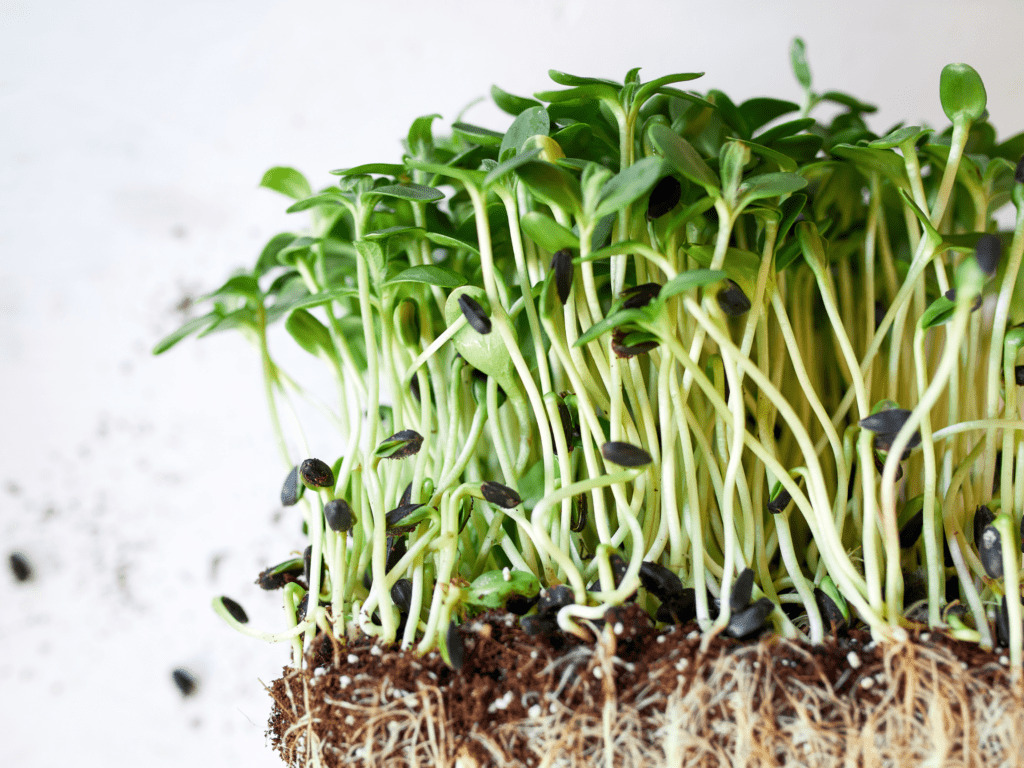
Key Takeaways: The Best Soils for Growing Microgreens
The best soils for growing microgreens should offer a fine balance of drainage, nutrient content, and pH levels. Ultimately, the choice may vary depending on your specific microgreens variety and growing conditions.
Choosing the right soil for growing microgreens is crucial to their growth and overall health. This will lead to a satisfying harvest of nutritious and tasty greens to enjoy in your favorite dishes. A
A small indoor microgreens garden makes a great addition to your prepper food supply. Having the ability to grow these indoors is a great skill to have in a survival scenario.
If you want to know which of these we prefer, we really like #2 FoxFarm Happy Frog Potting Soil. We have had success with this product and it is more affordable than some of the other brands.
Let us know in the comments below what your favorite “go to” soil mix is and why you like it.
ABOUT THE AUTHOR
Bill Montgomery is the co-founder of Modern Day Prepping. He and his wife Angie have been dedicated to the self-reliant lifestyle since 2008. When he’s not working on the homestead, he enjoys tinkering with electronics and family movie nights with Angie and their two boys. To learn more about Bill, visit the About Us page.
If you want to know how to keep your family safe in the modern world, visit Privacy For Patriots, a sister site that Bill started to help fellow Patriots stay "off the radar" from bad actors and big tech.

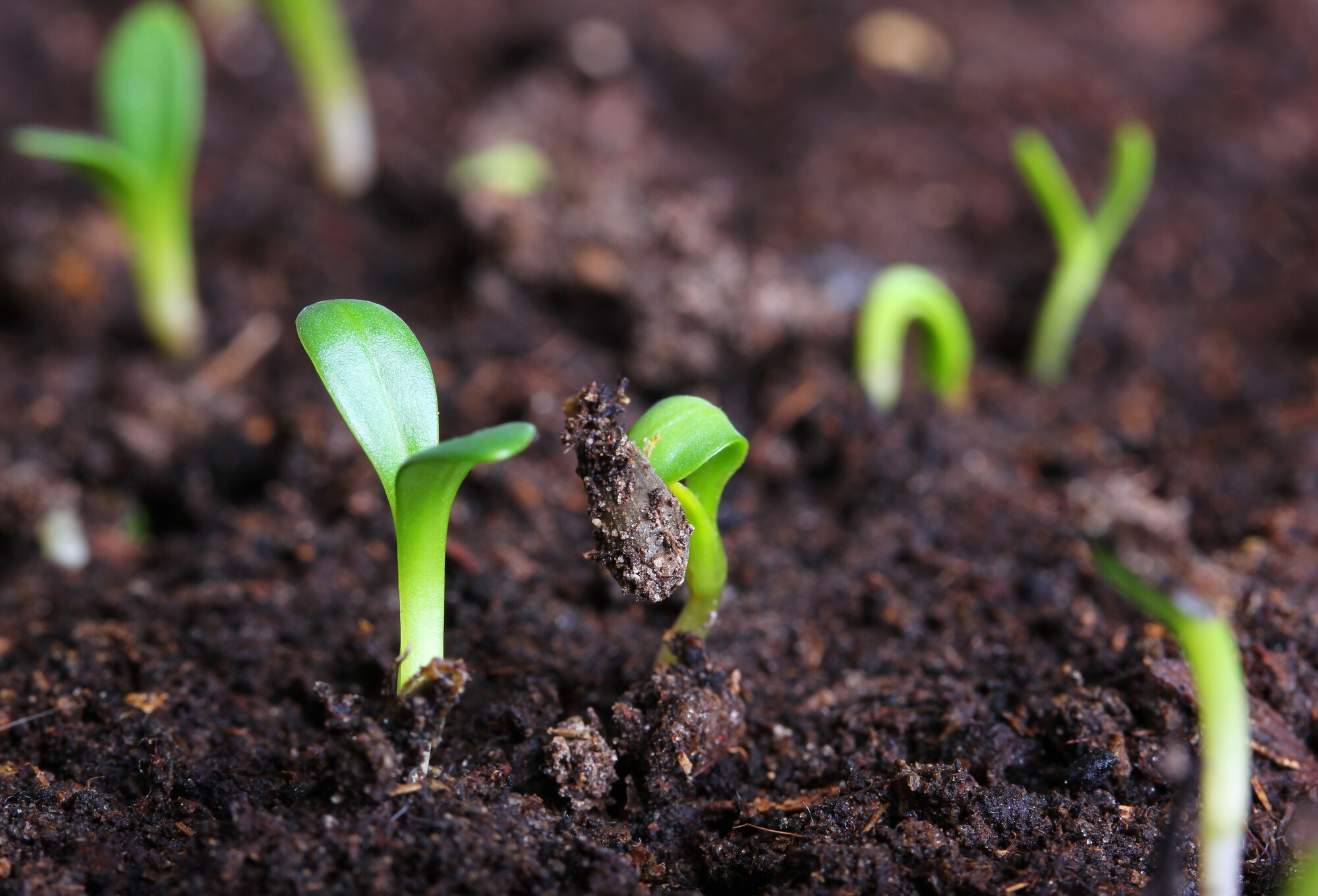











0 Comments